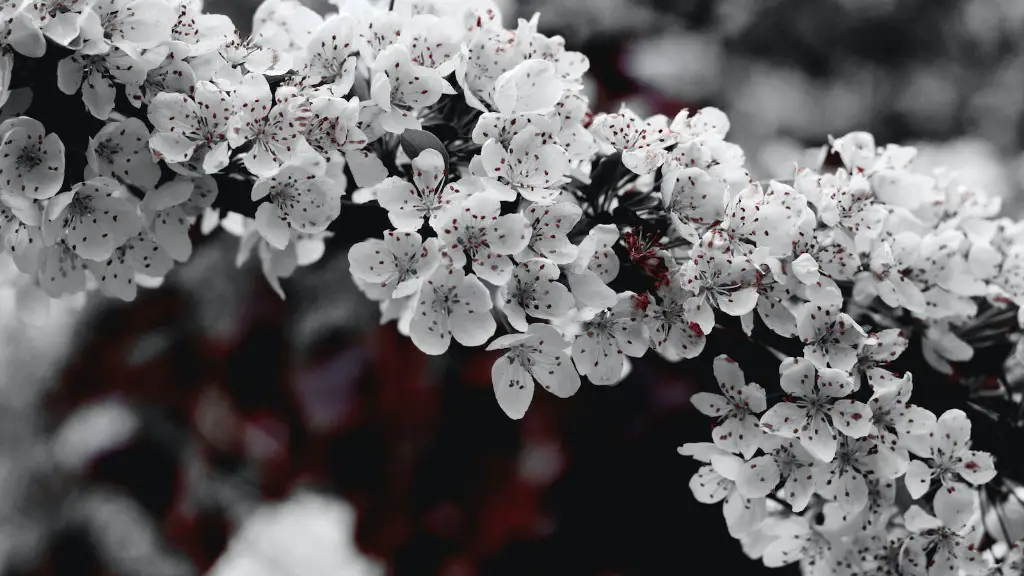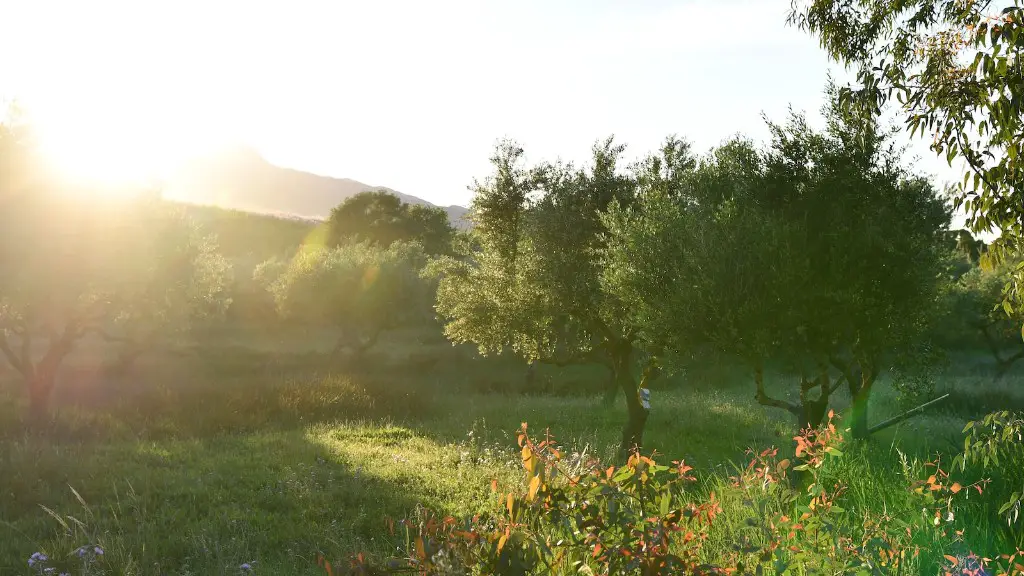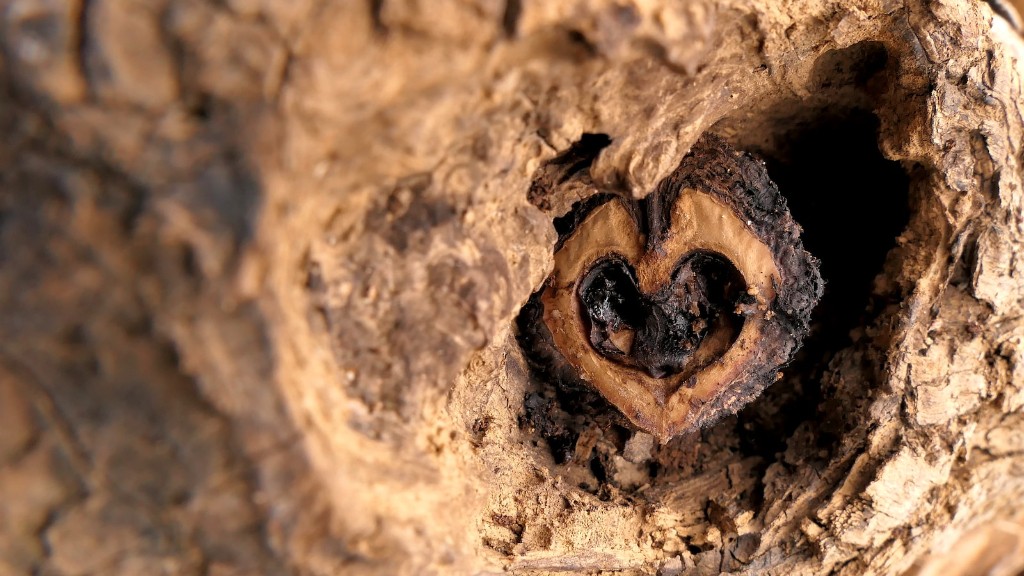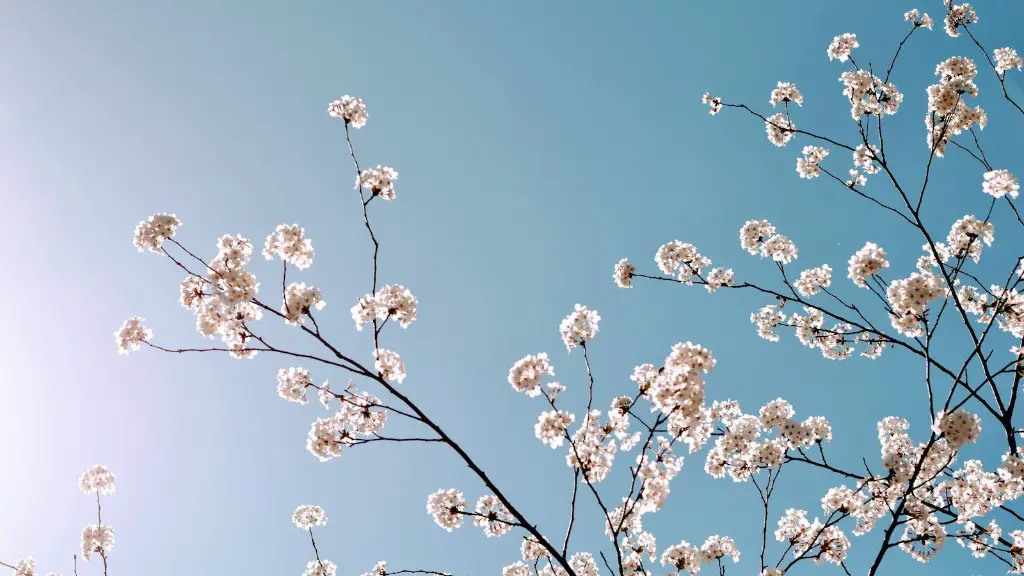The sight of leaves being chomped off your beautiful cherry tree by an unknown creature can be an intimidating sight. It leaves many amateur gardeners and gardeners alike feeling uncertain and unsure as to what to do. In this article, we will cover the common culprits behind the eating of cherry tree leaves, why they might be doing it and what should be done to mitigate the damage.
There are countless potential reasons why your leaf-eating intruder could be consuming the leaves of your cherry tree. The most common culprits are caterpillars, deer, voles, birds, and rabbits. An observant eye will be able to detect which of these animals is responsible for the damage. For example, caterpillars tend to consume large sections of cherry tree leaves, leaving behind cleanly-edged, remaining portions like how a scissors would cut paper. Deer are also known to consume tree leaves, though they will tend to leave behind a jagged and rough-edged remaining leaf when consuming a leaf.
The damage caused by this leaf-eating activity can cause serious harm if left unchecked. For one, if enough leaves are consumed, especially in conjunction with other environmental stressors like drought and high weather variance, there is a risk of plant die-off. Further, the added stress caused by the loss of leaves can easily disrupt the balance and growth of the tree, affecting its ability to bear fruit.
Fortunately, there are several steps one can take to protect their cherry tree from the ravages of leaf-eating activities. The simplest option is to cover the tree with netting as a protective barrier, be sure to secure the netting to the ground with stakes. Alternatively, you can physically remove the animals by hand, such as using gloves to pick off caterpillars or using a live animal trap. You can also choose to use chemical methods such as insecticides or repellants to deter the animals away from your cherry tree.
Finally, proper pruning can also go a long way in protecting your cherry tree from future infestations. Pruning your cherry tree annually can help with both leaf-eating activities as well as keeping it’s growth even and helping the tree gain resistance to environmental stressors. In addition, pruning, when done correctly, can help the tree grow faster and direct energy away from fruit production and towards leaf production, which can help bolster the tree’s defenses against leaf-eaters.
Bugs
Of all the animals that consume leaves from cherry trees, bugs are the most common culprits. A wide variety of bugs feed off of cherry tree leaves, from minor bugs like aphids to major bugs like gypsy moths and tent caterpillars. Though their damage is often minor compared the the previous mentioned animals, their sheer numbers can be daunting and lead to defoliation if ignored.
Fortunately, bugs can be controlled in a variety of ways that do not require the use of harmful chemicals. One of the key approaches to dealing with bugs is careful observations – regularly inspecting the tree for any presence of bugs and then manually removing the clustered bugs by hand. This can be an early warning system and if done on a regular basis, can help keep bugs at bay. Additionally, natural chemical deterrents like Neem oil can also be used to help reduce the presence of bugs while avoiding harm to the ecosystem.
It is also important to remember that bugs serve as part of the larger ecosystem and can provide helpful functions such as pollination, predator control, and production of natural biochemicals like spore or chemical signals that assist in the protection of other plants. Thus, it is important to exercise caution when controlling bugs and to keep its role in the bigger picture in mind.
Deer
Deer are also a common source of leaf damage to cherry trees, though their consuming habits are different from bugs. Often, deer will consume whole leaves or entire branches of cherry trees, leaving behind no remaining traces of their presence. This can create canopies of leafless branches and unsightly scars, causing both visual damage and disfigurement of your cherry tree.
The best approach to dealing with deer is to make the tree an unappealing food source. By making the tree physically unpleasant or unappealing to consume, you can deter deer away from eating it. This can involve repulsive physical defenses like wire mesh fences, electric fencing and bars, or natural deterrents like soap, human hair, and strong-smelling plants with strong odors like garlic, alliums and onion.
At the same time, it is also important to remember that deer do not want to consume leaves and branches from your cherry tree. If presented with other, more appetizing sources of vegetation, deer will be more likely to stay away from your tree and consume other food sources. Thus, it is an important goal to keep the surrounding area landscaped and maintained in order to keep deer away from your cherry tree.
Voles
Voles are another common source of leaf damage to cherry trees. Voles are omnivorous rodents which consume both plants and insects, and can leave notable damage to cherry tree leaves due to their burrowing and munching behaviors. Common signs of damage involve bark shredding, twig and trunk girdling, as well as gnaw marks around the base of the tree.
Getting rid of voles can be a tricky process due to the burrow structures they create. Thus, the best approach to deal with voles is to destroy their burrow systems by introducing chemical deterrents, physical barriers of fencing, or repellants like mothballs. Further, trapping them with standard mouse/rat live traps can also be effective though voles are quite small and can be difficult to locate. In addition, using natural predators like snakes and owls can be used as a form of population control for voles.
Birds
Birds are also infamous for their leaf eating habits. Though their damage is often minor compared to other animals such as rabbits or voles, birds can still cause significant damage if their numbers are high enough. The most common signs of bird damage includes cleanly-cut holes in leaves and buds, as they are meticulous eaters and will carefully cut away portions of the leave they wish to eat. Additionally, birds may sometimes consume fruit on the tree if there is enough of it.
The most effective course of action in dealing with leaf-eating birds is physical deterrents. Installation of physical hindrances like bird spikes make it difficult for birds to land on the tree, or to hang pre-made deterrents like scare birds, reflective streamers and bunches of old CDs and DVDs are effective. For larger infestations, netting can also be used to prevent birds from consuming the tree leaves. Additionally, the use of noise makers can also be useful, such as bird frighteners like loud horns or sirens that can help scare birds away.
Rabbits
Finally, rabbits can also be a culprit when it comes to leaf-eating activities on cherry trees. Rabbits consume cherry tree leaves by taking large bites out of the leaves, usually in a circular pattern. They often leave behind telltale nibble damage and fecal droppings which can act as an early warning sign.
The safest and most effective approach in dealing with rabbits are physical barriers such as fences and wire mesh. A fence should be installed around the perimeter of your cherry tree, extending one foot into the ground and two feet above ground, and should be carefully secured in the ground with stakes. Alternatively, a wire mesh fence installed around the cherry tree can act as an effective deterrent and physical barrier as well. Additionally, the use of repellants such as strong-smelling plants and natural deterrents like sulphur or ammonia can also be utilized to help keep rabbits away.
Early Detection
As we have discussed, the primary challenge in managing leaf-eating activities on cherry trees is early detection – knowing which animals are causing the damage and what the best course of action should be. Fortunately, the most effective way in detecting early signs of leaf-eating activities is careful, regular observation.
By observing your cherry tree regularly you can detect which animals are eating your leaves and take appropriate action. In this way, you can spot early signs of infestation and take measures to protect your cherry tree before the damage becomes too severe. Early detection can also help in curbing the population size of leaf-eating animals, and can help in deciding the most effective course of action for prevention.
Conclusion
Ultimately, managing leaf-eating activities on cherry trees is a daunting task in and of itself, and one must exercise caution, care, and know-how in navigating the various methods available. With careful observation and the control methods discussed in this article, one should be able to protect their cherry tree from the ravages of leaf-eating activity in order to ensure a healthy, lush, and fruitful tree.





